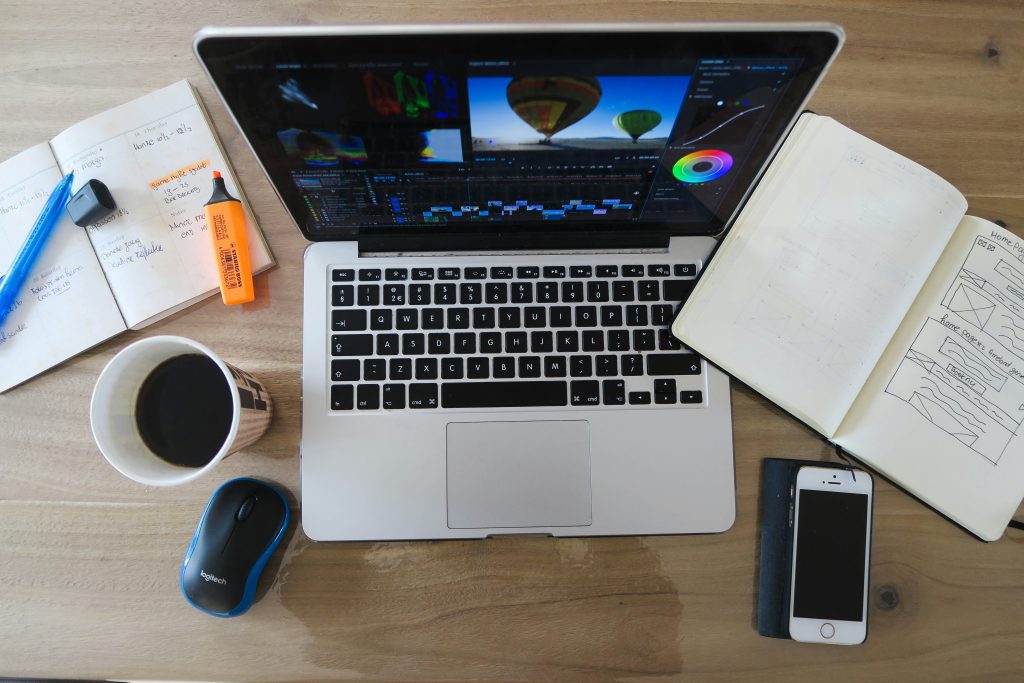Introduction
Digital tools like apps and calendars dominate modern productivity, offering speed and connectivity, while analog methods like physical planners provide a distraction-free experience. Balancing both can optimize your workflow, but each of them have their own advantages and disadvantages. This article breaks down their strengths and weaknesses to help you find the right combination.

Pros of Digital Productivity Methods:
Digital tools offer powerful advantages for managing tasks efficiently, especially in dynamic or collaborative environments. They streamline workflows with features that analog methods can’t replicate, making them ideal for tech-savvy users or teams handling complex projects.
Accessibility and collaboration: Digital tools shine in team settings. Platforms like Google Calendar or Trello let you access tasks from any device, whether you are at home or on the go. You can share project boards instantly with colleagues, assign tasks and track progress in real-time, making collaboration seamless for remote or hybrid teams.
Automation: Apps save time by automating repetitive tasks. Todoist can send you a reminder 30 minutes before a deadline, while calendar apps sync events across your phone, laptop and tablet. This reduces the mental load of remembering deadlines or manually updating schedules.
Scalability: Digital tools manage complexity very efficiently. If you’re managing a large project with hundreds of tasks, tools like Notion, allow you to organize all details into databases, use filters to sort by priority and search for specific files instantly-these are features that paper cannot simply match.
Cons of Digital Productivity Methods:
Despite their strength, digital productivity methods become outperformed when it comes to the old-fashioned methods. They’re just classics, right? Well then here are the downsides:
Distractions: This is the main disadvantage of digital productivity. It is just so tempting to open that notification regarding the message sent by your friend during work. This derails your productivity as your focus is on secondary stuff rather than work. Each app has an option to mute notifications which may help but nevertheless, the temptation to open that message won’t easily disappear right?
Learning curve: When setting up apps to settings which we may prefer, this causes us to be dependent on them, but that is wrong as many apps algorithms are in the learning process. Those apps may not perform up to their standards as they are not well programmed to do that. For example: You are an employee of a business that is well-known. A reminder was set on your phone for an important meeting. The workload was just too much that you knew you would forget it. So you kept the reminder just 5 minutes before the meeting started. But guess what? The next day, the reminder did not go off. Why? Because your phone’s battery had died due to the use of multiple productivity apps all day and so many notifications from other apps like email alerts. Then, next time you learn to never trust your phone again for scheduling meetings. But luckily you remembered because your assistant manager had called you to inform you that the attendees are waiting for you.
Pros of Analog Productivity Methods:
Analog methods provide a tactile, distraction-free approach to productivity that many find refreshing in a tech-heavy world. They cater to those who follow simplicity and focus, offering unique benefits that digital tools often lack. Here are the main advantages:
Focus and mindfulness: Writing by hand forces you to slow down and focus. Using a bullet journal or a simple notebook, you are more engaged with your tasks, as there is no risk of digital distractions, like notifications, that may break your flow. Studies show that writing improves memory retention, helping you internalize your plans better.
Simplicity: Analog tools require no setup. All you need is a pen and paper and you are ready to roll! This makes analog methods more efficient when it comes to productivity and less screen time is used.
Creativity: Paper involves unmatched creativity when it comes to art. You are able to freely sketch ideas or design anything anyway you like without any limitations. This freedom can make planning more engaging and personalized compared to rigid app templates.
Cons of Analog Productivity Methods:
While analog methods have their charm, they also present challenges that can make them less practical in certain scenarios. Their lack of modern features can slow down workflows, especially for collaborative or fast-paced projects. Here are the downsides:
Lack of Automation: Analog methods offer no reminders or syncing. If you forget to check your notebook, you might miss a deadline. You must manually rewrite or update tasks, which may be time-consuming.
Portability Issues: Carrying a notebook, planner or whiteboard? Who needs those when everything is available online right at your fingertips? If you’re travelling light, a bulky journal can be inconvenient, and there is no way to access your notes instantly on another device like you can with a cloud-based app.
Limited Collaboration: Sharing analog notes with your team is really slow. You would need to scan or photocopy pages then send them manually, which is a big hassle. This makes analog methods less effective for group projects where real-time updates are crucial.

Conclusion:
Balancing digital and analog productivity methods lets you leverage the automation and collaboration of digital tools while enjoying the focus and simplicity of analog ones. Using apps like Trello for team tasks, alongside a notebook for daily planning. Test both to create a system that keeps you organized and focused.
Comment below what do you prefer between Digital or Analog Productivity Methods?🌟



